

What Does a Trump Presidency Mean for IMLS? President-elect Trump continues to demonstrate that he doesn’t plan to govern like his predecessors, having recently nominated department heads who are at odds with the mission of their departments.
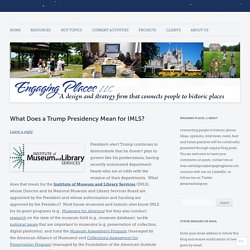
What does that mean for the Institute of Museum and Library Services (IMLS), whose Director and its National Museum and Library Services Board are appointed by the President and whose authorization and funding are approved by the President? Most house museums and historic sites know IMLS for its grant programs (e.g., Museums for America) but they also conduct research on the state of the museum field (e.g., museum database); tackle national issues that are important to museums (e.g, preservation of collection, digital platforms); and fund the Museum Assessment Program (managed by the American Alliance of Museums) and Collections Assessment for Preservation Program (managed by the Foundation of the American Institute for Conservation of Historic and Artistic Works). 1. Copyright Flowchart: Can I Use It? Yes? No? If This… Then…
It is the responsibility of all educators to model good digital citizenship for their students.

Especially when it comes to copyright, plagiarism and intellectual property. The waters are murky. Not being familiar with online digital rights and responsibilities (hey, teachers did not grow up with the Internet being around), educators are wading through uncharted waters (hey, I did not know that I could not just google an image to use. If someone puts it up online it is free for the taking). Radical Trust. This month, our regular contributor Porchia Moore expands on the concept of Radical Trust she introduced in her last blog post for us.
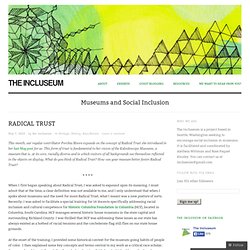
This form of trust is fundamental to her vision of the Kaleidoscope Museums, a museum that is, at its core, racially diverse and in which visitors of all backgrounds see themselves reflected in the objects on display. What do you think of Radical Trust? How can your museum better foster Radical Trust? When I first began speaking about Radical Trust, I was asked to expound upon its meaning.
I must admit that at the time, a clear definition was not available to me, and I only understood that when I spoke about museums and the need for more Radical Trust, what I meant was a new posture of sorts. Www.semcdirect.net/Resources/Documents/SEMC Survey Responses- Students Transitioning to Museum Professionals.pdf. GUEST BLOG POST: A Cultural Heritage Management Plan for Mudurnu, Turkey: Forging Heritage-Led Sustainable Development Strategies.
From time to time we ask heritage practitioners to share their stories.
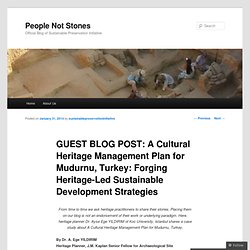
Museums look for university partners to put them on viable financial path. Despite all the hand-wringing about the long-term financial viability of higher education institutions, one group of institutions views universities as a rock-solid bet on which to stake their futures: museums.
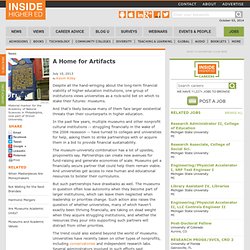
And that’s likely because many of them face larger existential threats than their counterparts in higher education. In the past few years, multiple museums and other nonprofit cultural institutions -- struggling financially in the wake of the 2008 recession -- have turned to colleges and universities for help, asking them to strike partnerships with or acquire them in a bid to provide financial sustainability.
The museum-university combination has a lot of upsides, proponents say. Partnerships can create new avenues for fund-raising and generate economies of scale. Museums get a financially secure partner that could help them remain viable. Developing Intellectual Property Policies: A How-To Guide for Museums. Intellectual property is a phrase used to define "a concept in which tangible expressions of intellectual/creative pursuits -- such as inventions, designs, creative works, etc. -- are treated in legal and social spheres as property, with all its attendant implications (e.g., ownership, use, economic transactions, etc.).
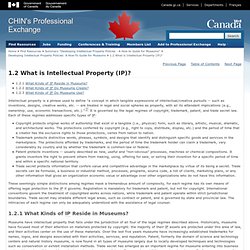
" It is governed by the legal regimes of copyright, trademark, patent, and trade secret law. Each of these regimes addresses specific types of IP: Copyright protects original works of authorship that exist in a tangible (i.e., physical) form, such as literary, artistic, musical, dramatic, and architectural works. The protections conferred by copyright (e.g., right to copy, distribute, display, etc.) and the period of time that a creator has the exclusive rights to those protections, varies from nation to nation. Www.calmuseums.org/_data/n_0001/resources/live/GMI_Best_Practices_final_v2.0.pdf.
Policies & Reports. General Information Requests to Congress Please direct questions or comments to Kenneth Johnson, email: JohnsonKF@si.edu Tax Returns For the Smithsonian Tax Filings, click here.
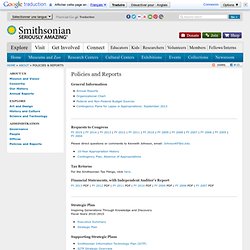
Financial Statements, with Independent Auditor's Report Strategic Plan Inspiring Generations Through Knowledge and DiscoveryFiscal Years 2010–2015 Supporting Strategic Plans Smithsonian Directives Annual Performance Plan: Fiscal Year 2014 Short-term goals and performance objectives focus the Smithsonian's resources on priorities for major construction projects; securing the funding necessary to address maintenance and revitalization of building; opening new exhibitions and updating others that will have tremendous public impact; improving visitor services; and strengthening stewardship of the national collections. PDF, 12 pages. Www.aam-us.org/docs/advocacy/aam-cjs-approps-comments-testimony-fy14.pdf?sfvrsn=2. Www.gpo.gov/fdsys/pkg/CRPT-113hrpt17/pdf/CRPT-113hrpt17.pdf. Museum strategy.